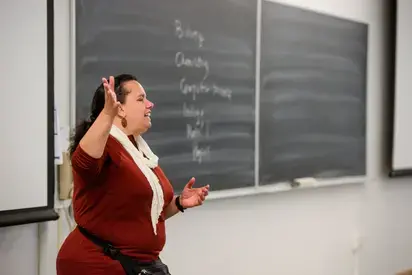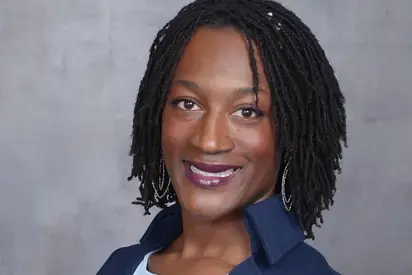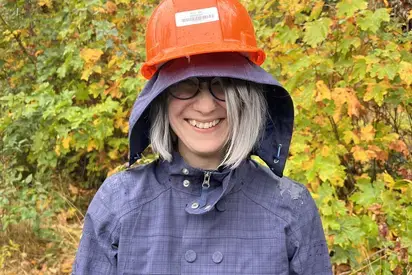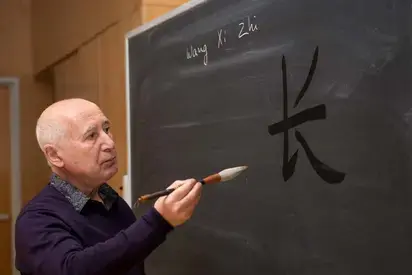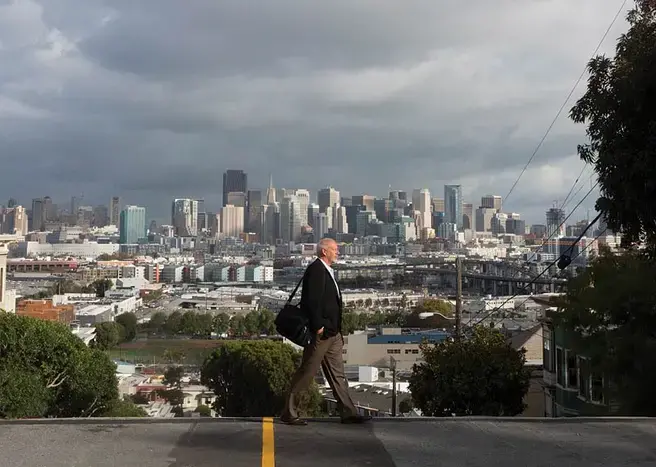
By sidetracking a plan to figure out what he wanted to do in life, Gil Kelley ’79 discovered his calling.
In April, he was named San Francisco’s director of citywide planning, his latest post in an urban planning career that began even before he graduated from Evergreen. It’s a career that came about because of a destiny-changing detour Kelley took in the early 1970s that put him in North Bonneville, Wash., a Columbia River town facing imminent upheaval.
At the time, Kelley had a year at Brown University behind him. His father died after he entered the Providence, R.I., school, and he returned home to Portland, Ore., to help his mother and younger siblings. He decided to take a year off from college—“to find myself,” he said—and travel to Gilroy, Calif., where family forebears had once settled. “I was going to work on a farm, sleep in someone’s barn, live a very ascetic life, and write poetry.”
Shortly before his departure, a high school friend, Michael Mills ’77 (profiled in Evergreen Magazine’s fall 2009 issue), invited him to come to North Bonneville before heading to California. Mills, an Evergreen sophomore, was working on a big project in the town with his urban planning program, and he wanted Kelley to check it out.
We were empowered to learn about urban planning and activism.
—Gil Kelley
Kelley accepted his friend’s invitation and stayed for four years. Soon after his arrival, an Evergreen internship opened up with North Bonneville’s planning department to help move the entire town of 600 residents to a new site. The Army Corps of Engineers would
be demolishing the community to make way for Bonneville Dam’s second hydroelectric powerhouse. Kelley applied for the position and was accepted. He enrolled at Evergreen, ditching Brown and his poetry-writing trip.
“What was going on in North Bonneville was completely absorbing,” said Kelley, who, along with fellow Greeners, joined forces with the town’s citizens to rebuild the town from scratch, shaping its future collaboratively. “We were being empowered to learn about urban planning and activism and doing that in an applied way.”
The effort was an unprecedented case in which the displaced townspeople, armed with the students’ research and assistance, fought to stay together—rather than be disbanded. They gained federal legislation obligating the Corps to pay for the design of their new town to be carried out under the community’s control.
Kelley lived and studied in North Bonneville, eventually becoming a senior planner with the planning department. “I was hired when I was a junior, working as an intern,” he said. After the relocation was completed, he finished up his studies by taking a political economy program at Evergreen’s Olympia campus.
After graduation, Kelley moved to Berkeley, Calif., where he said, “I was hired by a private planning firm on the strength of the work I had done with Evergreen in North Bonneville.”
In the mid-1980s, he began working for the City of Berkeley, eventually becoming its chief of planning and development, a job he held for a decade. During his tenure, he led efforts to revitalize the downtown area and West Berkeley’s more industrial, mixed-use district (one in which diverse activities such as living, shopping, and working are in close proximity).
In 1999, he was hired as the director of planning for the City of Portland. He served in that position for nine years, overseeing the redevelopment of the South Waterfront district, which transformed a
Willamette riverfront industrial brownfield into a high-rise, mixed-use neighborhood, as well as the rebirth of the city’s streetcar system, and planning and urban design projects for the Pearl District and other neighborhoods. He also created Portland’s River Renaissance Strategy to restore the health of the city’s rivers, streams, and watersheds and redevelop the shorelines to improve public access.
In addition to his municipal jobs, Kelley has worked as a planning consultant and advisor to public and private sector clients—including in China and Brazil. He is known as an advocate for sustainable, equitable urban development that engages citizens in the process of designing their own communities. He's also at the forefront of promoting the concept of a 20-minute neighborhood, where everything a resident needs—food, work, school, shopping, parks, recreation, etc.—is located within a 20-minute walk or bike ride from home. He spearheaded this concept in Portland, where it continues to shape planning and development and is incorporated in the city’s 25-year strategic plan. (This plan was shepherded by Eric Engstrom ’91, featured below.)
In the five years between his stints as chief planner for the cities of Portland and San Francisco, Kelley went to the Harvard Graduate School of Design on a prestigious Loeb Fellowship, was a Lincoln Fellow at the Lincoln Institute of Land Policy, and obtained a mid-career master’s degree in urban studies and planning from the Massachusetts Institute of Technology.
He loves teaching, something he does every fall in a University of Amsterdam master class on planning and negotiation for senior-level European planners. He also assists the American Planning Association with training new planning directors, and he is a practitioner-in-residence at Portland State University’s Nohad A. Toulan School of Urban Studies and Planning.
In the dynamic metropolis of San Francisco, Kelley is applying more than 35 years of experience in city planning and administration—beginning with the revelatory one he had with Evergreen in North Bonneville. He has a staff of 45 and focuses on managing the development of long-range plans and improving urban design and planning policies.
He resides in the Hayes Valley neighborhood, and tries to live with the lowest possible carbon footprint. He doesn’t have a car and walks everywhere, including to work. “I now live in a 10-minute neighborhood!” he said.
Although Kelley abandoned his dream of becoming a poet, he does write, a skill he developed with Evergreen faculty direction. He’s at work on two books—one on the idea of “the intentional city,” a vision involving collaborative governance to create great urban places, and another on 20-minute neighborhoods—when he finds the time, that is. Mostly, though, he’s working “to make things better,” another “central skill” learned at Evergreen. “It empowered me to solve problems in a creative way,” he said.

